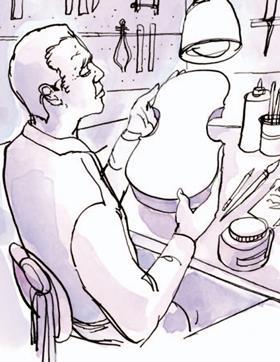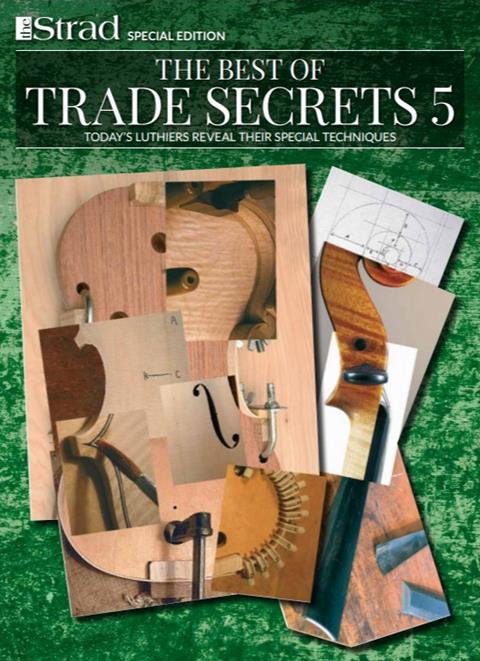For John Dilworth, an instrument’s heart and soul lie in one tiny piece of spruce

Discover more lutherie articles here
This article is from the August 2013 issue of The Strad
Everyone wonders about the soundpost. Can it really be so important? Is it really so sensitive? Is it really the soul of a violin, viola, cello or bass? Well, as far as I’m concerned, the answers are yes, yes and yes. It really is the most wonderful small thing. It deserves all the attention it can get. It defines the whole history of the instrument. Modern bowed strings appeared when someone came up with the idea of putting a little stick inside the instrument.
Try it in a guitar (preferably a friend’s, without telling them) and all the resonance disappears. Put it in a violin and it doesn’t just wake up – it bursts into life. The first thing I do when I joint a top for a new instrument is split a piece from each side for bass-bar and soundpost. It’s nice to have everything split and matched to the original. Then the post material goes in my dowel-former on the lathe, and I generally lose that particular stick when I finally get around to setting the finished instrument up. But I have plenty in stock.
Fitting it, though, is the test. The rule is: tension, position, fit – in that order of importance. I don’t know about the acoustics, but the post provides tension inside the instrument, and it’s also a fulcrum: its location behind the bridge determines how the vibrations are distributed across the instrument. So it has to be the correct length to give the right amount of tension, and it has to be pretty well exactly 0.5mm inside the bridge foot, 2.5mm behind it and absolutely vertical. The reason it has to fit well is so that it doesn’t damage the interior surfaces, and so that it can be adjusted easily. Make it much thinner than 6.5mm and you’re in danger of putting too much localised force against the splitty spruce of the top. Make it bigger and it won’t go in through the soundholes. If the post in your fiddle needs to be outside these specifications to make it sound well, there is something else seriously wrong with your violin. It’s true. Tone problems can come from all over the fiddle, but it’s the poor old soundpost that often gets the blame.

The sound of a loose post is unsettlingly like that of a tight one: constricted, hollow, unresonant. You know which one is the case by trying to move the thing. If it won’t go, it’s too tight. If it goes too easily, throw it away and make a longer one. If the sound is too sharp and piercing, the post needs to move backwards. If it’s dull and a little boomy, nudge it nearer to the bridge. If the sound is unbalanced across the strings, adjust the top and bottom end of the post separately: the bottom of the post seems to affect the bass strings and vice versa. It sounds remarkably simple, but it really is true.
Read: Trade Secrets: Making a soundpost jig
Read: Edgar Russ: The right soundpost position
Discover more lutherie articles here
This article is from the August 2013 issue of The Strad
An exclusive range of instrument making posters, books, calendars and information products published by and directly for sale from The Strad.
The Strad’s exclusive instrument posters, most with actual-size photos depicting every nuance of the instrument. Our posters are used by luthiers across the world as models for their own instruments, thanks to the detailed outlines and measurements on the back.
The number one source for a range of books covering making and stinged instruments with commentaries from today’s top instrument experts.
This year’s calendar celebrates the top instruments played by members of the Australian Chamber Orchestra, Melbourne Symphony, Australian String Quartet and some of the country’s greatest soloists.
Best of 2023: The Strad’s Twelve Days of Lutherie
- 1
- 2
- 3
- 4
- 5
- 6
- 7
- 8
 Currently reading
Currently readingSmall wonders: The soundpost
- 9
- 10
- 11
- 12
- 13


























































No comments yet